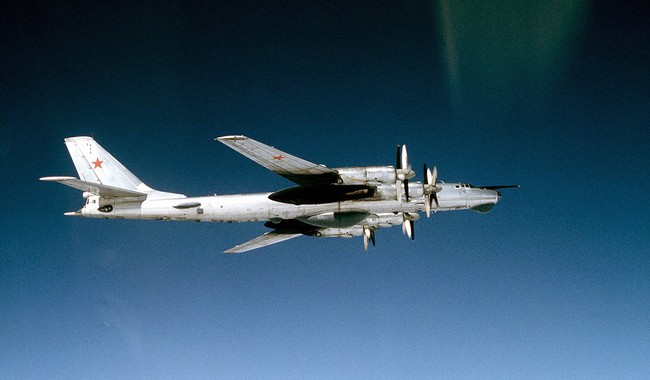
On Monday, in another one of those “exercising right to travel in international airspace” exercises, a Russian Il-38 maritime patrol bomber entered Japanese airspace near the northern island of Hokkaido. The Japanese Self-Defense Forces (JSDF) scrambled fighters in response, who had to use flares to persuade the Russian aircraft to leave Japanese airspace.
Advertisement
Japanese Defense Minister Minoru Kihara told reporters that the Russian Il-38 plane breached Japan’s airspace above Rebun Island, just off the coast of the country’s northernmost main island of Hokkaido, for up to a minute in three instances, during its five-hour flight in the area.
It came a day after a joint fleet of Chinese and Russian warships sailed around Japanese northern coasts. Kihara said the airspace violation could be related to a joint military exercise that Russia and China announced earlier this month.
Japan scrambled an undisclosed number of F-15 and F-35 fighter jets, which used flares for the first time after the Russian aircraft apparently ignored their warnings, Kihara said.
“The airspace violation was extremely regrettable,” Kihara said. He said Japan “strongly protested” to Russia through diplomatic channels and demanded preventive measures.
The Il-38 (NATO codename “May”) is a Cold War-era maritime patrol and anti-submarine warfare (ASW) bomber. The Il-38 has a range of 4,700 miles, much less than the Tu-95 Bear. The Bear is more typically used for these kinds of incursions, having a range of 9,300 miles. The Il-38 is also only capable of carrying ASW weapons and anti-ship missiles, while the Bear is reportedly capable of carrying nuclear-tipped air-to-ground cruise missiles.
Advertisement
It’s important to note that, due to a dispute over the Kuril Islands, several small islands to the northeast of the Japanese island of Hokkaido, the Soviet Union and Japan never signed a peace treaty formally ending the brief 1945 war between the two countries. Russia and Japan both still maintain territorial claims to the Kurils.
Russia and China have been kicking up their heels in the North Pacific off the Alaskan coast as well.
Eight Russian military planes and four navy vessels, including two submarines, have come close to Alaska in recent days as Russia and China conducted joint military drills.
In July, two Russian Tu-95s and two Chinese H-6s entered the Alaska Air Defense Identification Zone, NORAD said. The bombers were intercepted by U.S. F-16 and F-35 fighter jets, along with Canadian CF-18s and other support aircraft, a U.S. defense official confirmed to CBS News.
The Chinese Xi’an H-6 is a version of the Cold War-era Soviet Tu-16 “Badger” bomber. The Badger is also reportedly capable of carrying nuclear-capable cruise missiles.
See Related: What Could Go Wrong? It’s Possible US Navy Will Escort Philippine Ships in South China Sea
WATCH: Gen. Keane Weighs In on the Path to World War III, How US Adversaries Treat Trump Vs. Biden
Advertisement
While these kinds of “free navigation of international airspace/international waters” exercises have been going on since the beginning of the Cold War, Russia and China seem interested in stepping up the pace — also the fact that Russia placed one of their aging fleet of Il-18s in actual Japanese airspace may well be significant. An estimated 30 of the mostly obsolete Il-18s are still in service; if poking the Japanese to test their response was the goal, one would think it logical to send an aircraft that the aggressive nation won’t mind losing.
The United States has also recently moved troops to Shemya Island, in the western Aleutians, for an “exercise.” As of this writing, the exercise is concluded, and the troops have returned to their home bases.
